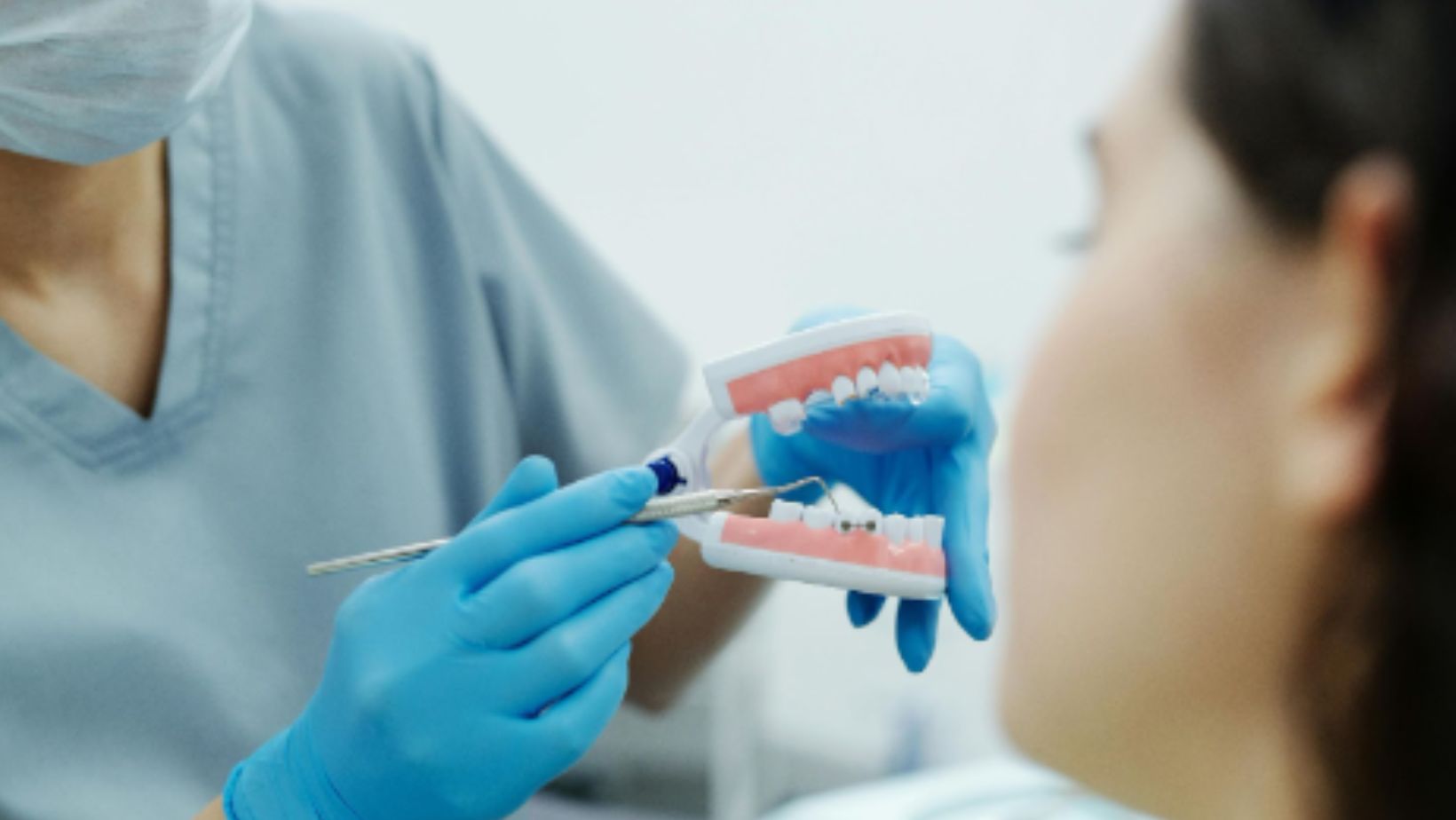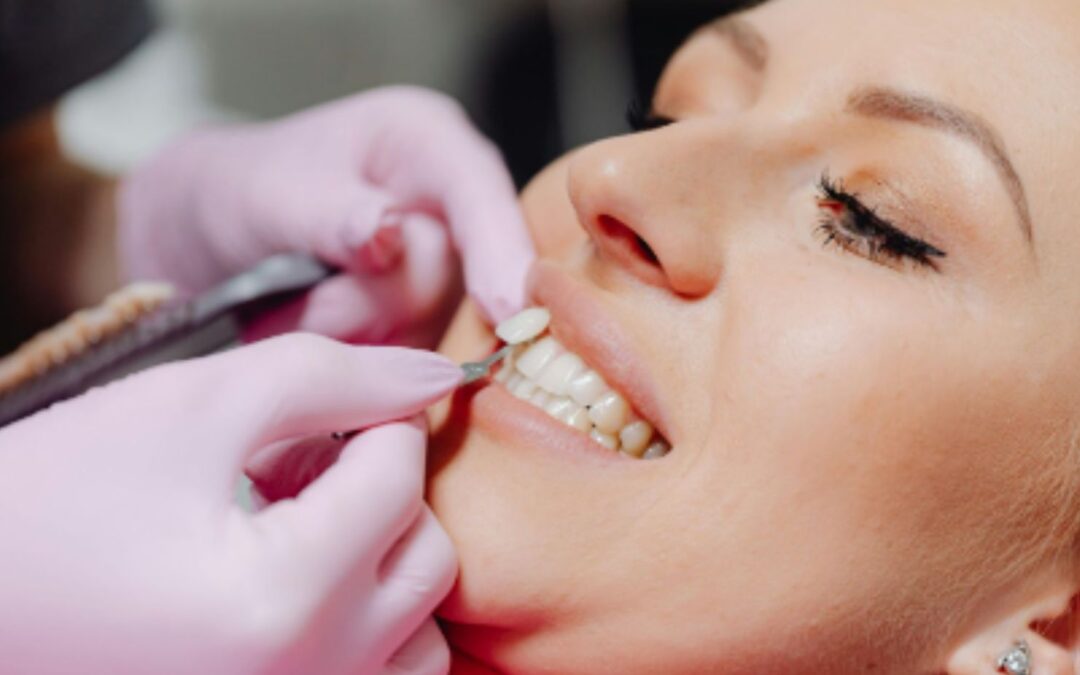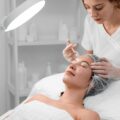Meta Description: Flushing’s cosmetic dentistry landscape prioritizes stringent safety standards and protocols, ensuring patient trust and safety; discover why it’s crucial.
The significance of stringent safety standards and protocols in the domain of cosmetic dentistry, particularly in Flushing, cannot be overstated. As we delve deeper into this subject, we will consider the importance of dental ethics, patient privacy, sterilization procedures, infection control measures, and the use of biocompatible materials. The rigorous adherence to these standards by dental clinics in Flushing not only guarantees patient safety but also fosters a sense of trust and confidence, making this a matter of utmost importance and deserving of thorough examination.
Understanding Cosmetic Dentistry
What exactly is cosmetic dentistry, you might ask? Cosmetic dentistry is a specialized field of dental practice that focuses on improving the appearance of teeth, gums, and overall oral aesthetics. It involves various techniques designed to enhance the smile’s aesthetic appeal while ensuring the best oral health.
The evolution of cosmetic techniques has been substantial, with modern advancements offering more effective and less invasive procedures. From teeth whitening, veneers, bonding, and dental implants to orthodontics, the range of available cosmetic procedures has expanded greatly, each with its unique benefits and considerations.
The benefits of aesthetic dentistry are manifold. One of the most obvious advantages is the enhancement of one’s physical appearance. Aesthetic dentistry can rectify various dental imperfections such as discoloration, chipped teeth, gaps, and even misalignments, resulting in an improved smile and boosted self-confidence.
But aesthetic dentistry benefits go beyond just physical attractiveness. It also contributes to oral health improvement. Procedures like dental implants not only replace missing teeth but also prevent jawbone loss. Similarly, orthodontic treatments correct misaligned teeth, reducing the risk of oral diseases. In essence, cosmetic dentistry is a fusion of art and science aimed at enhancing both the aesthetic and health aspects of the oral cavity.
Importance of Safety Standards
Safety standards in cosmetic dentistry are paramount to ensuring excellent patient health and successful dental outcomes. These standards, which include understanding safety protocols and their correct implementation, serve as a blueprint for reducing risks and enhancing patient safety. In the context of Flushing’s cosmetic dentistry scene, adhering to these standards becomes essential due to the increasingly diverse range of procedures offered and the inherent complexity they present.
Understanding Safety Standards
In the field of cosmetic dentistry, adhering to rigorous safety standards serves as the cornerstone of patient protection and care excellence. These safety standards encompass facets such as Dental Ethics and Patient Privacy, both of which are integral to the provision of safe, high-quality dental services. Dental Ethics pertains to the moral principles guiding dentist behavior, ensuring treatments are carried out responsibly and with the patient’s best interest in mind. Meanwhile, Patient Privacy refers to the safeguarding of personal and medical information, a critical aspect of patient trust and overall care quality. Understanding these safety standards is crucial, as they form the foundation upon which safe, ethical, and patient-centric cosmetic dentistry is built.
Implementing Safety Protocols
Adherence to safety protocols in cosmetic dentistry is not just a regulatory requirement but a dedication to patient welfare, underscoring the importance of these standards in the industry. It is crucial to integrate safety measures into every practice, guaranteeing patient comfort and safety. Implementing robust sanitation methods is a vital component of these protocols. This includes the sterilization of tools and maintaining a hygienic environment to prevent cross-contamination and infection. Additionally, dental professionals must stay updated with the latest industry standards and methodologies to guarantee the highest quality of care. The implementation of these protocols is a reflection of the dental practice’s dedication to patient welfare, showcasing their commitment to excellence in service.
Ensuring Patient Safety
Maintaining patient safety in cosmetic dentistry goes beyond mere compliance with regulations; it signifies a commitment to the highest ethical and professional standards in the industry. Dental Anxiety Mitigation and Patient Comfort Strategies play pivotal roles in assuring patient safety. By addressing dental anxiety, practitioners not only alleviate fear and stress but also prevent potential miscommunication that could lead to treatment complications. Innovative patient comfort strategies, such as the use of advanced anesthesia techniques, comfortable dental chairs, and calming office environments, can improve patient cooperation and treatment outcomes. Regular training on these aspects should be incorporated into practice management to guarantee adherence to safety standards, thereby fostering a culture of patient safety and satisfaction within cosmetic dentistry.
Dentistry Regulatory Bodies in Flushing
Flushing boasts a number of prominent regulatory bodies that supervise and uphold the standards of cosmetic dentistry. These organizations play a crucial role in maintaining the quality of dental services provided to the public. They guarantee that dentists and dental clinics adhere to the stringent Flushing Dentistry Laws, thereby safeguarding the health and wellness of the community.
The Regulatory Bodies’ Role in Flushing encompasses a wide range of responsibilities. They are tasked with evaluating the qualifications of dentists, issuing licenses, and monitoring the ongoing professional conduct of licensed practitioners. They also set and enforce standards for dental procedures, materials, and equipment, ensuring that all aspects of cosmetic dentistry are in accordance with the established norms.
The regulatory bodies are also key in investigating complaints and allegations against practitioners. They have the power to impose sanctions, ranging from warnings and fines to the suspension or revocation of licenses, in the event of violations of the Flushing Dentistry Laws.
The presence of these regulatory bodies in Flushing is essential to maintaining a high level of confidence in the cosmetic dentistry industry. They not only uphold professional standards but also protect public health, ensuring that the community receives safe and effective dental care.
Infection Control in Dental Clinics
In the domain of cosmetic dentistry, maintaining a high standard of infection control is paramount in dental clinics. Specifically, sterilization procedures and the implementation of protective measures play a vital role in safeguarding both patients and staff against potential infections. The ensuing discussion will encompass these key aspects, illuminating their significance in the context of Flushing’s dental safety standards.
Sterilization Procedures
Adherence to rigorous sterilization procedures is paramount in the field of cosmetic dentistry to maintain impeccable infection control within dental clinics. Effective sterilization processes are gauged by sterilization indicators – tools that verify the success of the sterilization cycle. These indicators confirm the attainment of desired sterilization parameters such as time, temperature, and presence of steam.
Disposal methods also play a crucial role in infection control. They encompass the proper discarding of single-use items and the correct handling of sharps to avoid cross-contamination. Spent sterilization indicators, once they have fulfilled their role, must also be responsibly disposed of.
Protective Measures Implementation
Building on established sterilization procedures, the implementation of protective measures forms another crucial layer of infection control in dental clinics. These measures include meticulous dental equipment maintenance and patient comfort measures. Frequent maintenance guarantees the proper function of devices, minimizing the risk of infection due to contamination. Additionally, it lengthens the lifespan of the equipment, ensuring consistent delivery of high-quality dental services.
Patient comfort measures, on the other hand, are not just about alleviating anxiety or discomfort. These measures include providing clean, sterilized dental bibs and protective eyewear and using single-use items when applicable. These practices prevent cross-contamination between patients, which is essential for maintaining a safe dental environment. Through these protective measures, cosmetic dentistry in Flushing maintains high safety standards, ultimately promoting overall public health.
Sterilization Procedures for Equipment
Maintaining excellent hygiene standards in Flushing clinics, rigorous sterilization procedures for equipment play a critical role in ensuring patient safety in cosmetic dentistry. Equipment Maintenance and Sterilization Challenges are two key areas that demand attention.
Equipment maintenance is the first line of defense in guaranteeing sterilization, and it includes tasks such as regular cleaning, inspection, and timely repairs of cosmetic dentistry machinery and tools. This upkeep minimizes the risk of malfunctioning equipment that may lead to poor sterilization efforts, which in turn, can potentially compromise patient safety.
Sterilization challenges pose another critical concern. These challenges often arise due to the complex nature of dental equipment that features hard-to-reach areas, making sterilization a difficult task. Additionally, the wide variety of dental instruments made from different materials necessitates a range of sterilization techniques. Hence, it is important for clinics to adopt a detailed sterilization protocol that caters to these diverse needs. This includes using heat sterilization for heat-tolerant tools, chemical sterilants for heat-sensitive items, and routine monitoring of sterilization procedures to ensure their effectiveness. These combined efforts ensure patient safety and uphold the highest standards of hygiene in Flushing’s cosmetic dentistry clinics.
Safe Use of Dental Materials
In addition to stringent sterilization protocols, the careful selection and application of dental materials is another key factor in preserving patient safety in cosmetic dentistry in Flushing. This involves thoughtful consideration of Material Biocompatibility. Fundamentally, this refers to the compatibility of dental materials with the patient’s body. The use of biocompatible materials reduces the risk of adverse reactions, fostering a safer dental treatment environment.
Another important aspect is Allergy Testing. Dental professionals should conduct preliminary allergy tests, especially when using new materials. This step is critical in preventing allergic reactions that could potentially compromise the patient’s health. It is, therefore, a standard practice in Flushing’s cosmetic dentistry to ensure the safe use of dental materials.
The choice of dental materials also plays a significant role in the overall aesthetic outcome of cosmetic dentistry procedures. That’s why dental professionals in Flushing prioritize the use of materials that not only ensure patient safety but also enhance aesthetic appeal. To sum up, the safe use of dental materials, coupled with stringent sterilization protocols, ensures that patients receive safe and satisfactory cosmetic dentistry services.
Patient Safety Protocols
To uphold the highest standards of patient safety in cosmetic dentistry in Flushing, several stringent protocols are meticulously followed. These protocols are designed to mitigate cosmetic procedure risks and guarantee patient well-being before, during, and after treatment.

One key aspect of patient safety protocols includes a detailed review of dental insurance policies. This guarantees patients understand the coverage, limitations, and potential out-of-pocket expenses related to their cosmetic procedure. This transparency allows patients to make informed decisions about their treatments and reduces financial surprises post-procedure.
Moreover, thorough patient health evaluations are conducted to assess the suitability for cosmetic procedures. These evaluations include meticulously reviewing medical histories and conducting detailed oral examinations. Such assessments help in identifying potential risk factors that could contribute to complications or sub-optimal results.
Additionally, patient safety protocols encompass strict sterilization and infection control measures. These measures adhere to stringent guidelines set by regulatory bodies to prevent cross-contamination and ensure a safe, hygienic environment for cosmetic dentistry procedures.
In Flushing, cosmetic dentists prioritize patient safety and adhere to these rigorous protocols to ensure successful outcomes and patient satisfaction, further solidifying their commitment to excellent dental care.
Minimizing Radiation Exposure
Beyond the rigorous protocols already mentioned, Flushing cosmetic dentists also implement strategies to minimize radiation exposure during diagnostic procedures. Utilizing state-of-the-art equipment, they guarantee the radiation measurement is as low as possible without compromising diagnostic accuracy. They leverage digital imaging systems that greatly reduce radiation exposure compared to older film-based radiography.
Furthermore, innovative lead aprons with thyroid collars are used to shield patients from scatter radiation, offering an additional layer of protection. Regular equipment inspections and calibrations also contribute to the maintenance of safe radiation levels, assuring the equipment operates within the recommended guidelines.
Patient education forms an integral part of this radiation safety protocol. Dentists and dental staff are committed to educating patients about the safety measures in place and the relatively low risk associated with dental radiography. They empower patients with knowledge, dispelling fears and misconceptions about radiation exposure, contributing to a more comfortable and trusting dental experience.
Emergency Preparedness in Dental Practices
The importance of emergency preparedness in dental practices cannot be overstated, as it directly impacts patient safety and the overall quality of care. Two critical aspects of this preparedness are the implementation of thorough emergency protocols and the availability of essential emergency equipment. As we progress, we will explore these areas in detail, understanding their integral role in establishing high safety standards in cosmetic dentistry in Flushing.
Implementing Emergency Protocols
Implementing robust emergency protocols in dental practices plays a pivotal role in safeguarding both patients and staff during unforeseen incidents. These protocols should encompass clear emergency signages that guide individuals on the necessary steps to take during crises. Emergency signages not only provide direction but also instill a sense of confidence in patients, knowing that their safety is prioritized.
Moreover, dental practices should work closely with dental insurance providers to make sure that all emergency procedures are covered. This not only reduces the financial burden on patients but also enhances their trust in the practice. In summary, the integration of effective emergency protocols, appropriate signages, and dental insurance coverage contributes significantly to a safer and more reliable dental practice environment.
Essential Emergency Equipment
In the domain of emergency preparedness within dental practices, the presence of essential emergency equipment is an essential component to guarantee safety and prompt response during crises. This equipment ranges from automated external defibrillators to oxygen tanks, and their readiness directly impacts patient outcomes in emergency situations. Regular equipment maintenance is vital to secure the reliability and efficiency of these tools. Additionally, dental innovations have paved the way for more advanced equipment, enhancing the ability of practitioners to manage emergencies with precision and speed. It is incumbent upon dental practices to not only invest in high-quality emergency equipment but also to prioritize its regular maintenance to uphold the highest standards of safety.
Staff Training and Competence
How can we gauge the proficiency and qualifications of cosmetic dentistry staff in Flushing? A significant measure of this lies in the extent of staff training and competence, which is directly linked to the safety and success of dental procedures at Parsons Smile Center.
Dental expertise is paramount in this field, as it drives the accurate diagnosis and treatment of various cosmetic dental conditions. Stringent training programs that emphasize both theoretical knowledge and practical skills are essential. These programs should be regularly updated to incorporate the latest advances in cosmetic dentistry, ensuring that the staff is well-equipped to handle a range of procedures and situations.
In addition to technical proficiency, staff motivation plays a pivotal role in maintaining high standards of patient care. Motivated staff are more likely to show commitment to ongoing learning, display meticulous attention to detail, and adhere strictly to safety protocols. Regular workshops, seminars, and professional development courses can serve as motivational tools, fostering a culture of continuous improvement and excellence.
It is important that these aspects of staff training and competence are regularly monitored and evaluated, ensuring the delivery of safe and high-quality cosmetic dentistry services in Flushing.
Patient Communication and Consent
Effective communication between the dental staff and the patient is essential in cosmetic dentistry, as it forms the basis for informed consent and contributes greatly to patient safety and satisfaction. Establishing clear, open lines of communication serves to reduce misunderstandings, build trust, and make sure that the patient is fully aware of all procedures, risks, and benefits.
The process of communication in cosmetic dentistry involves several stages, each presenting its unique set of challenges. One common issue is overcoming communication barriers, which may stem from language, hearing impairment, or a lack of understanding of medical terminology. The use of simple, non-technical language, visual aids, and interpreters when necessary, can help to bridge these gaps.
Consent documentation is an important element in the patient communication process. This document should clearly outline the treatment plan, potential risks, alternative options, and the patient’s right to withdraw consent at any point. It’s essential that the patient understands and agrees to these terms before any procedure is undertaken.
Regular Auditing and Compliance Checks
To maintain the highest standards of cosmetic dentistry safety in Flushing, regular auditing and compliance checks play a pivotal role. These measures guarantee that practices adhere to the stipulated safety regulations and protocols, mitigating risks and enhancing patient safety.

Audit frequency is a critical aspect of this process. Regularly scheduled audits – whether quarterly, bi-annually, or annually – allow for consistent monitoring of safety practices. This frequency ensures that any deviations from the established standards are promptly identified and rectified. An effective audit process involves thorough checks on sterilization procedures, proper use of equipment, adherence to patient consent processes, and the correctness of record-keeping.
Compliance benefits are multifold. For the dental practice, consistent compliance reduces legal risks and enhances the clinic’s reputation for safety. For patients, it assures them of the clinic’s commitment to their wellbeing, fostering trust and confidence in the services provided. It also promotes a culture of continuous improvement within the practice, as regular audits often lead to the identification of areas for improvement.
Frequently Asked Questions
What Types of Insurance Plans Are Accepted by Cosmetic Dentists in Flushing?
Cosmetic dentists in Flushing typically accept a variety of insurance plans, including those within Preferred Provider Networks. However, patients must be aware of Insurance Coverage Limitations, which may affect their out-of-pocket costs.
How Much Does a Typical Cosmetic Dental Procedure Cost in Flushing?
The cost of a typical cosmetic dental procedure in Flushing varies widely based on the specific treatment. However, many dental practices offer financing options and procedure alternatives to make treatments more affordable for patients.
What Should I Expect During a Cosmetic Dentistry Consultation?
During a cosmetic dentistry consultation, the dentist will discuss various treatment options suitable for your dental needs. The goal is to guarantee patient satisfaction by providing detailed explanations and answering all your queries.
Are There Any Side Effects or Risks Associated With Cosmetic Dental Procedures?
Cosmetic dental procedures carry minimal risks, such as temporary discomfort. Procedure alternatives are available to mitigate any potential side effects. Post-treatment maintenance is crucial to guarantee the longevity and success of the cosmetic dental procedure.
How Long Does Recovery From a Common Cosmetic Dental Procedure Usually Take?
The recovery time for common cosmetic dental procedures varies, often lasting a few days to a week. Effective pain management strategies and diligent post-procedure care greatly influence this timeframe, ensuring a swift and comfortable healing period.
Jessica has a flair for writing engaging blogs and articles. She enjoys reading and learning new things which enables her to write different topics and fields with ease. She also strives to break down complex concepts and make them easy for anybody to comprehend.





